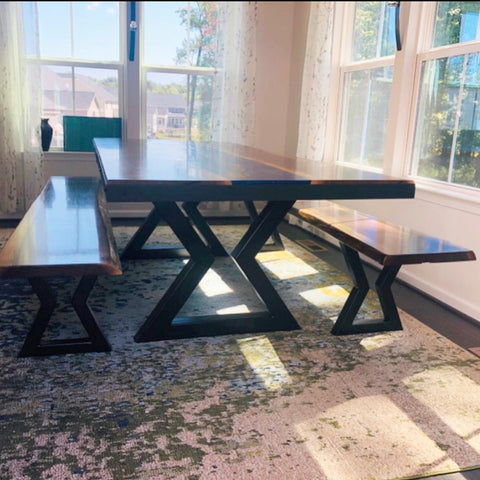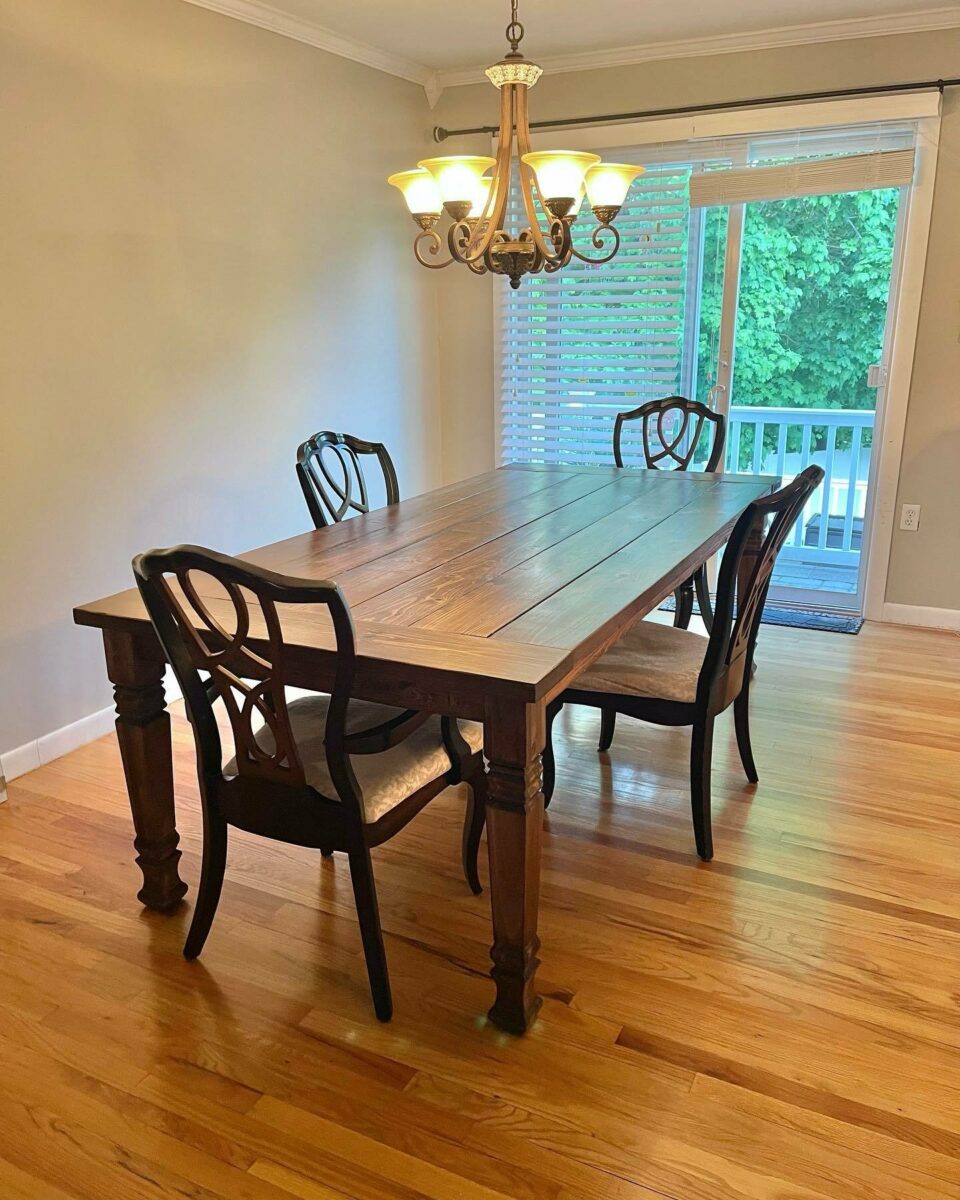The Top Trends in Dining Room Table Legs You Need to Know
The Top Trends in Dining Room Table Legs You Need to Know
Blog Article
From Standard to Modern: Find the Perfect Eating Area Table Legs for Your Style
While classic styles such as cabriole and transformed legs evoke a sense of ageless sophistication, modern styles like barrette and geometric alternatives present a chance for striking aesthetic rate of interest. As you consider these aspects, the inquiry stays: how can you effortlessly incorporate these diverse leg styles to develop an unified eating experience?
Comprehending Table Leg Styles
The variety of dining room table leg styles can considerably influence both the visual appeals and performance of the area. Each leg style contributes distinct sensible attributes and visual elements, accommodating varied style choices and use demands. Comprehending these styles is crucial for selecting the right eating table that straightens with your overall interior decoration vision.
For instance, conical legs supply a clean, classic look that can boost a space's sophistication, while pedestal bases offer stability and optimize legroom, making them excellent for smaller sized spaces. Hairpin legs, a characteristic of mid-century modern-day style, introduce a commercial style, permitting an airy, open feel. Trestle legs evoke rustic beauty, offering durable support and a feeling of eternity.
Furthermore, the selection of products plays a considerable role. Wood legs can bring warmth and appearance, whereas metal options commonly communicate a sleek, modern vibe. Eventually, recognizing table leg designs is necessary for producing a natural eating location that shows individual style while making certain practicality and convenience. By thoughtfully taking into consideration these aspects, you can boost both the practical and aesthetic allure of your eating room.
Traditional Table Leg Options
When choosing dining-room table legs, traditional options often personify ageless style and workmanship. These layouts show a rich heritage and a commitment to high quality, making them ideal for those who value traditional looks.
One of the most famous typical leg designs is the cabriole leg, characterized by its stylish curved shape. This style commonly features attractive makings and is most generally discovered in Queen Anne and Chippendale furnishings. Another popular alternative is the transformed leg, which flaunts a collection of smooth, rounded forms that offer a timeless look while keeping security.
Furthermore, the straight leg, while simple, uses a durable and basic structure that can blend perfectly with a variety of tabletop designs. For those attracted to ornate outlining, claw-and-ball feet legs evoke a feeling of splendour and can work as a sensational focal factor in any type of dining space.
Last but not least, pedestal bases, although not strictly legs, provide an alternate traditional option that enables sufficient legroom and can be wonderfully carved. Each of these traditional leg styles adds to the total atmosphere of a dining space, weding feature with aesthetic charm.

Modern Table Leg Layouts
Modern table leg layouts supply a varied variety of designs that highlight clean lines and innovative products. These designs often focus on performance while acting as striking focal factors within an eating area. Minimalist aesthetic appeals prevail, with legs crafted from materials such as steel, glass, and crafted wood, which add to a modern and airy feeling.
One popular layout is the hairpin leg, identified by its slender, tapered framework that offers stability without overwhelming the table top (dining room table legs). This design is typically located in mid-century modern-day furniture and can effortlessly match numerous dining table shapes. Another trend is using geometric shapes, where legs might handle unbalanced or angular forms, including visual interest and a touch of creativity

Mixing Styles for Distinct Spaces
Frequently, homeowners seek to develop one-of-a-kind eating areas that reflect their personal style by mixing different style elements. This method permits for the incorporation of diverse aesthetics, leading to an unified yet distinctive environment. For example, pairing a rustic wood table with smooth, modern-day steel legs can produce a distinctive comparison that elevates the area's general charm.
Furthermore, integrating vintage table legs with modern tabletops can stimulate a feeling of background while preserving a modern-day perceptiveness. Such combinations not just showcase specific taste yet likewise urge imagination, permitting property owners to curate a space that really feels both personal and inviting.
Shade plays a vital function in this blending process; picking table legs that complement or comparison with the existing see page color design can boost visual passion. For instance, whitewashed legs can soften the daring of a dark table surface, producing a balanced aesthetic.
Tips for Choosing the Right Legs
Choosing the right table legs is important for accomplishing both capability and aesthetic charm in your eating space. Begin by taking into consideration the overall style of your space. Typical settings gain from legs that include intricate carvings or turned styles, while modern spaces may require streamlined, minimal styles.
Following, evaluate the elevation and security of the legs. dining room table legs. Standard table range between 28 to 30 inches in elevation, so make sure the legs enhance this dimension for convenience. Additionally, robust materials, such as hardwood or steel, can improve stability and durability
Examine the read this article leg form too-- options include straight, tapered, or pedestal designs. Straight legs provide a traditional appearance, while conical legs can include a touch of style. Pedestal bases give ample legroom and are perfect for smaller sized areas.
Final Thought
In recap, choosing the suitable dining-room table legs calls for careful factor to consider of both modern and conventional styles. Traditional options such as cabriole and transformed legs supply classic elegance, while modern-day layouts like barrette and geometric shapes provide a modern touch. By harmonizing leg design, elevation, and material with the overall décor, a cohesive and welcoming environment can be accomplished. Inevitably, the selected table legs ought to reflect the preferred aesthetic, enhancing the eating experience within here the area.
The range of eating area table leg styles can considerably affect both the appearances and capability of the space. Eventually, understanding table leg styles is crucial for developing a natural eating location that reflects individual design while ensuring usefulness and comfort.One of the most legendary standard leg designs is the cabriole leg, characterized by its stylish curved shape. Straight legs supply a classic appearance, while conical legs can include a touch of beauty.In recap, selecting the suitable dining area table legs needs mindful consideration of both modern and standard designs.
Report this page